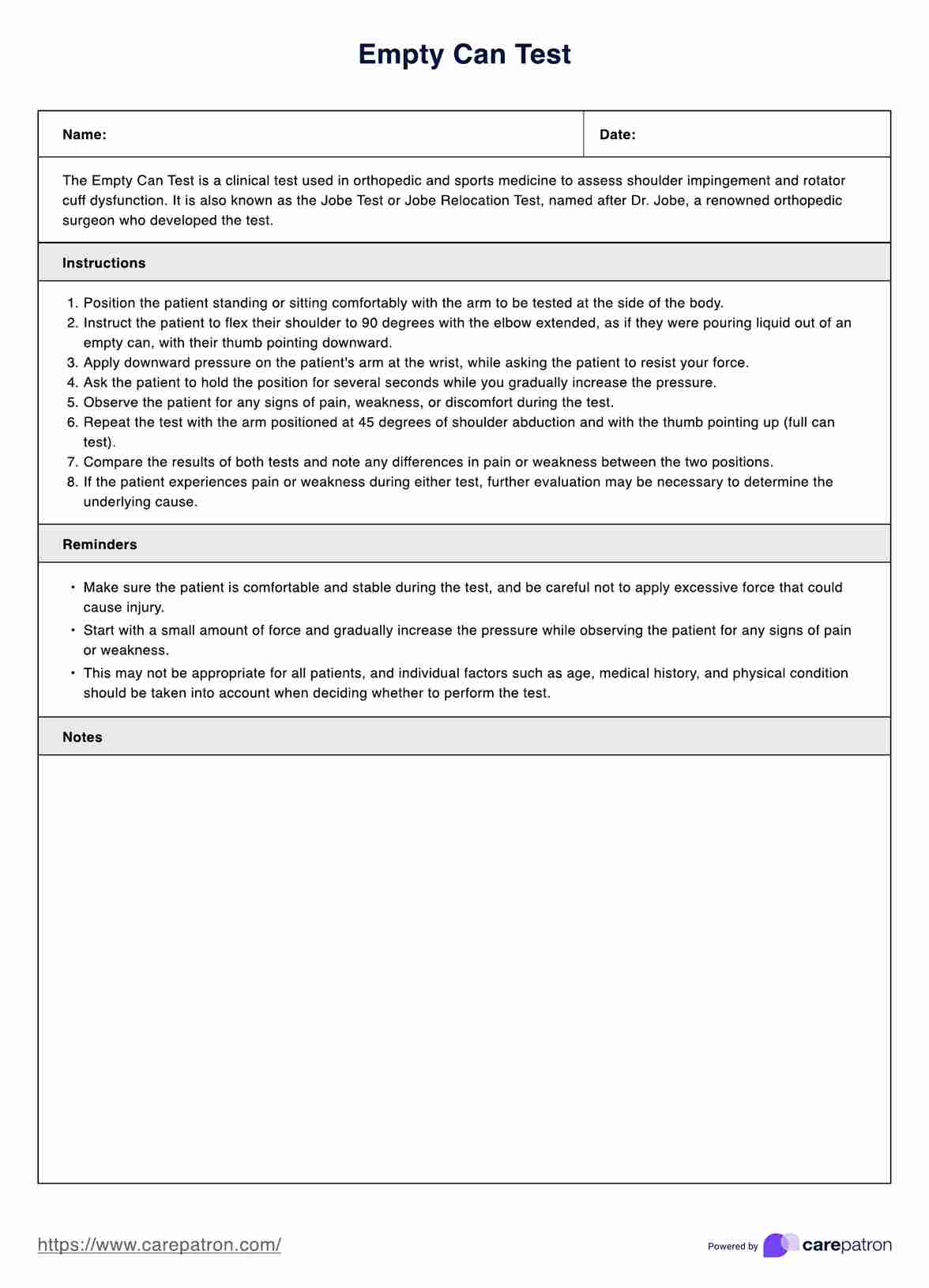This assessment tool doesn't have a scoring system, as it's designed to detect signs of pain and weakness. It's up to the practitioner to evaluate the results and make a diagnosis.

Empty Can Test
Understand how to perform the Empty Can Test and why it is important. Download our free PDF guide for an example of how to do the test correctly.
Use Template
Empty Can Test Template
Commonly asked questions
The Empty Can Test helps assess shoulder strength and range of motion. It can help you identify potential injuries, determine the severity of the injury, and monitor progress over time. Additionally, it can provide useful information for outlining a treatment plan.
The Empty Can Test measures the shoulder's strength and range of motion. It can help detect pain, weakness, or other abnormal movements that could indicate an injury.
EHR and practice management software
Get started for free
*No credit card required
Free
$0/usd
Unlimited clients
Telehealth
1GB of storage
Client portal text
Automated billing and online payments











